14 Types of Electrical Plugs Used Worldwide
When planning a trip overseas, it's important to consider the type of power plug used in your destination country. Every country has their own specific electrical plugs, and this can cause a problem for charging your devices. So, to avoid any inconvenience, it's recommended for you to carry a travel adapter that fits the local sockets.
There are around 14 different types of power plugs worldwide. Even though a single travel adapter can often accommodate multiple plug types, it's crucial to ensure that the adapter you choose is fully compatible with the outlets in the country you're visiting.
Below is the list of the 14 types of electrical plugs you might encounter globally.
1. Type A Plugs
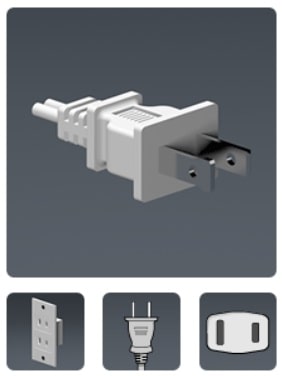
Type A plugs are two-pronged plugs with two flat, parallel pins. These pins often have holes near their ends which match up with "bumps" in some outlets. So, they can provide a snug fit that prevents the plug from slipping out.
These ungrounded plugs are frequently seen across Central and North America. Countries in Asia such as Japan, Malaysia, Thailand, and China also use this plug type.
2. Type B Plugs

Type B plugs come with two flat parallel pins like Type A, but they include a third pin for grounding. The grounding pin is longer to ensure that any device is safely earthed before the power connects.
These plugs, usually rated at 15 amps, are common in Central and North America as well. In Asia, nations like Japan, Laos, Taiwan, and Thailand use Type B plugs.
3. Type C Plugs
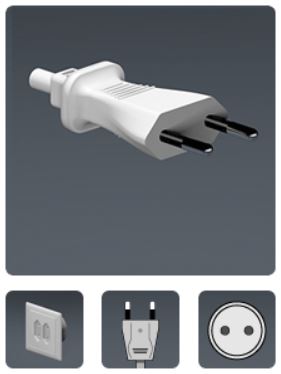
Type C plugs have two round pins and are designed for use with sockets that fit 4.0 - 4.8 mm round contacts spaced 19 mm apart. While they are compatible with several other socket types (E, F, J, K, or N), they are typically used for devices that draw up to 2.5 amps.
This is predominantly found in Europe (apart from the UK, Ireland, Cyprus, and Malta), these plugs are also used in many countries in Africa, Asia, and some regions in America.
4. Type D Plugs

Type D plugs can be recognized by their three large round pins arranged in a triangular pattern. They are often used together with Type M plugs, which are suitable for more powerful appliances. Some outlets are designed to accept both Type D and Type M plugs.
These plugs are rated for 5 amps and are commonly used in South Asia, like Bangladesh, India, Maldives, and Pakistan. In Africa, nations such as South Africa and Nigeria also use Type D plugs.
5. Type E Plugs
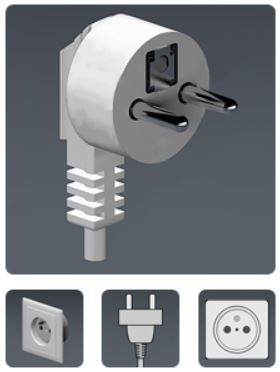
Type E plugs feature two round pins, each 4.8 mm in diameter which is spaced 19 mm apart. Additionally, they have a hole to accommodate the male earthing pin found in some sockets. The plug itself is round, and the Type E socket is characterized by a round recess.
Rated for 16 amps, these plugs are common in several African countries, including Cameroon, Ivory Coast, Ethiopia, and Madagascar. They are also used in various European countries like Belgium, Denmark, and Poland.
6. Type F Plugs
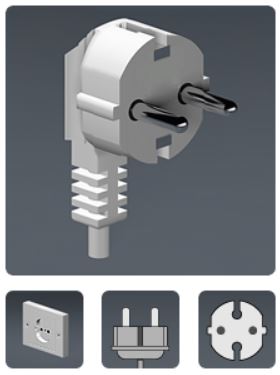
At a glance, Type F plugs might look similar to Type E plugs with their two 4.8 mm round pins set 19 mm apart. However, Type F plugs are distinct because they have grounding clips on either side instead of a grounding hole.
These plugs, also rated for 16 amps, are widely used in many other countries across Africa, Asia, and Europe, such as South Korea, Libya, and Russia.
7. Type G Plugs
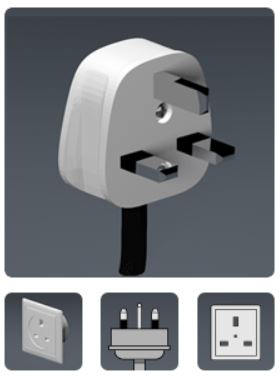
Type G plugs are designed with three rectangular blades that form a triangular arrangement and include built-in fuses. These fuses typically come in two sizes: 3 amps for smaller gadgets like computers, and 13 amps for high-power devices like heaters.
The United Kingdom is one of the countries that use Type G plugs. Their sockets are equipped with safety shutters to prevent foreign objects from being inserted.
8. Type H Plugs
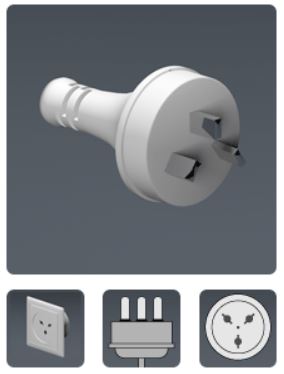
Type H is a 16 amp plug with a distinct V-shaped configuration for its two flat pins, along with a grounding pin. These are gradually being replaced with newer versions. The sockets are designed to fit both the new embedded Type H plugs and the traditional Type C plugs.
9. Type I Plugs
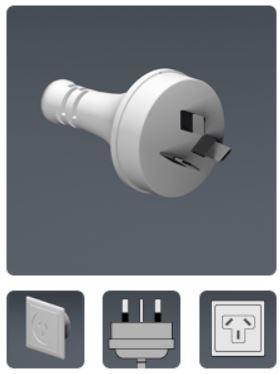
Type I plugs feature a V-shaped arrangement of two flat pins and a grounding pin. There's also a two-pin version without grounding.
Australia utilizes this plug type, which has a standard 10 amp system and a more powerful 15 amp version with a wider ground pin. A standard 10 amp plug can fit into a 15 amp socket, but not the other way around.
10. Type J Plugs
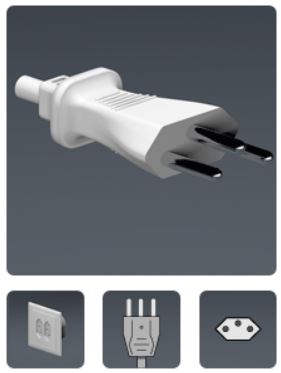
The 10 amp Type J plug includes two round pins and a grounding pin. It's similar to Brazil's Type N plug but is incompatible with Type N sockets due to the different positioning of the grounding pin. Type C plugs, however, can fit into Type J sockets.
11. Type K Plugs

Type K plugs, used in countries such as Bangladesh, Denmark, and Madagascar, have two round pins and a grounding pin. They resemble Type F plugs but differ as Type F has grounding clips instead of a grounding pin.
12. Type L Plugs
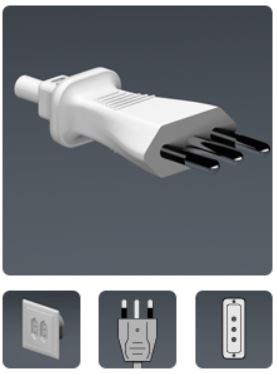
Type L plugs are divided into two categories based on their power capacity: 10 amp and 16 amp. The 10 amp variant features two 4 mm thick round pins placed 5.5 mm apart, with a central grounding pin for safety.
The more robust 16 amp model has thicker, 5 mm round pins that are spaced further apart at 8 mm, also with a grounding pin. These are structured to carry more electrical current, suitable for larger appliances.
13. Type M Plugs
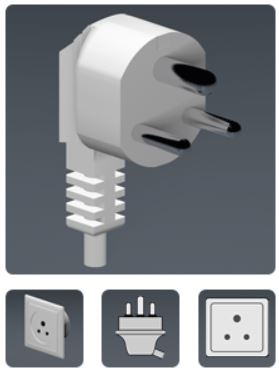
Type M plugs are equipped with three larger round pins forming a triangular arrangement. They resemble the Type D plugs used in India but are distinguishable by their larger pin size. In some countries where Type D plugs are standard, Type M plugs are also accepted, especially for appliances that require more power.
14. Type N Plugs

Type N plugs are available in two power ratings: 10 amp and 20 amp. The 10 amp plugs have two 4 mm thick round pins and a grounding pin for additional safety. The 20 amp plugs, intended for more power-intensive equipment, feature thicker pins, with a diameter of 4.8 mm, along with a grounding pin.
These 14 types of power plugs are internationally recognized. The first seven types are the most commonly used across a wide range of countries. The last seven types are less common, found only in specific regions.
For further details on the countries that use each of these plug types, visit International Electrotechnical Commission's website.
